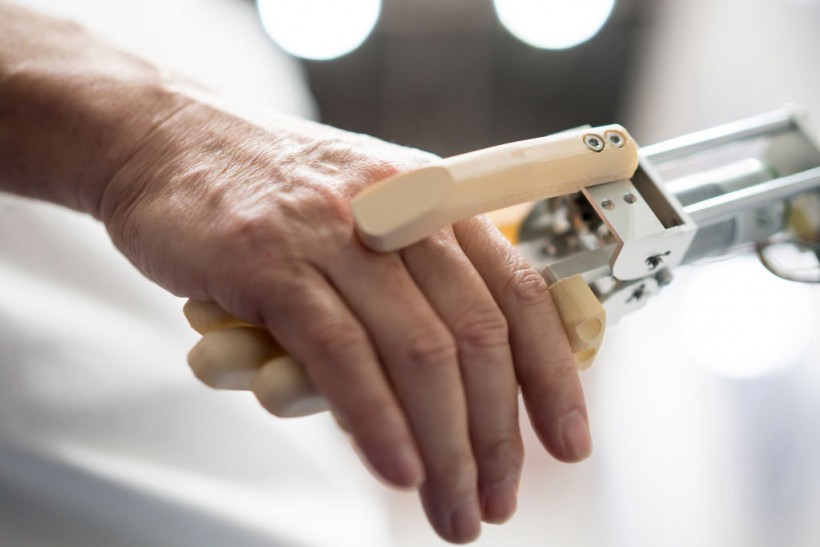A team of researchers from the Beijing Institute of Technology is breaking new ground in the field of robotics by unveiling a revolutionary control method inspired by the human arm.
This innovative approach has the potential to transform how robots assemble satellites in space, addressing the complex challenges they encounter during these delicate operations.
The breakthrough study, recently published in the journal Cyborg and Bionic Systems, offers hope for more precise and stable space assembly tasks.

TOKYO, JAPAN - OCTOBER 19: An attendee shakes hands with a robotic arm during the Japan Robot Week 2022 event on October 19, 2022, in Tokyo, Japan. The event showcases service robots and robot manufacturing technology and will be held from October 19 to 21.
Space Operations with Robots
Space missions increasingly rely on robots to interact with objects in complex and ever-changing environments. These tasks include assembling satellites, performing maintenance, and conducting various operations in space.
However, traditional robot control methods have significant limitations, particularly in adapting to diverse and uncertain situations. Vibrations during assembly can spell disaster, causing components to fail leading to mission setbacks.
To overcome these challenges, Interesting Engineering tells us that the Beijing researchers turned to the human arm for inspiration. They focused on a fundamental concept known as damping, which is reducing the amplitude of oscillations or vibrations by dissipating energy.
The human arm excels at adjusting its damping to perform different tasks with precision and stability. For example, when gently holding a fragile object, it reduces its damping to prevent damage, while it increases damping when pushing a heavy object to exert more force.
Mimicking the Human Arm
Mimicking this remarkable feature of the human arm, the research team designed a variable admittance controller for robots.
This controller enables robots to adjust their damping levels based on the specific contact conditions and assembly requirements, similar to how a human arm adapts to different tasks.
Moreover, it can compensate for external disturbances and environmental uncertainties, making it a versatile tool for complex space operations.
To test their method's effectiveness, the researchers created a dynamic data acquisition platform to capture human arm motion during assembly tasks.
They utilized advanced technology such as the ATI omega160 6D force sensor to measure contact force and the Stereolabs ZED mini motion capture system to record the arm's end velocity.
This data helped them understand the dynamic characteristics of human arm movements and identified three essential contact patterns for satellite assembly: sliding contact, impact contact, and stable contact.
Real-world Applications
To demonstrate the practicality of their method, the researchers applied it to a robot manipulator designed for satellite assembly in space.
Through extensive simulations and experiments, they assessed the performance of their approach under various scenarios and compared it with traditional compliance control methods.
Their findings indicated that the human-like variable admittance control method significantly improved the safety, robustness, and adaptability of robot space assembly.
To further validate their method, the researchers set up a ground-based experimental platform that simulated space satellite assembly conditions. This platform allowed them to measure forces and torques in the X, Y, and Z directions at the end of a robotic arm.
This groundbreaking research highlights the potential for developing control strategies that emulate human-like behavior, significantly enhancing the adaptability, precision, and controllability of robots undertaking assembly and maintenance tasks in space.
Stay posted here at Tech Times.
Related Article: Researchers Unveil Robot Structure Inspired by Elephant Trunks, Octopus Tentacles for Safer Human-Robot Interactions






